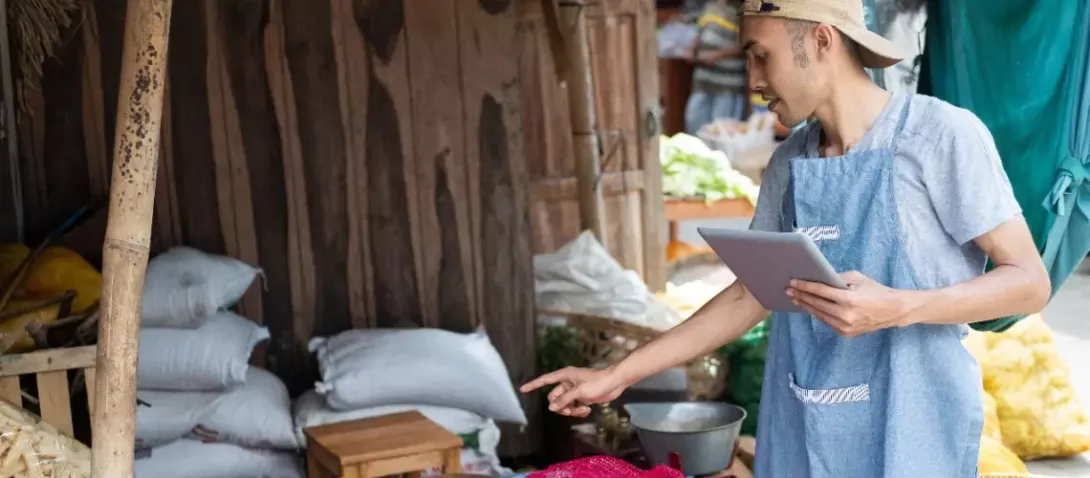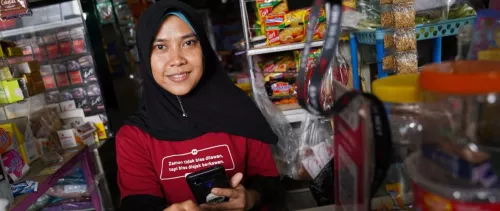
In Indonesia, digital e-commerce merchants have been far more resilient during the COVID-19 pandemic.
Many emerging market economies are still in the throes of the battle against the COVID-19, despite the advances made with vaccines. Indonesia is no exception. It is more important than ever to prepare Indonesian micro, small, and medium enterprises (MSMEs) to survive and thrive in the context of a disease that may be here to stay.
Our research suggests that e-commerce may be one way to help Indonesian entrepreneurs do this. In December 2020, the World Bank – in collaboration with Shopee – surveyed more than 15,000 digital merchants in Indonesia. All had made 30 or more transactions since joining the platform. The vast majority were MSMEs, with annual sales revenues in 2019 of less than IDR 50 billion. The survey asked respondents about the impact of the pandemic on their business operation and performance, how they coped with the pandemic, and government and business support they received and wanted to receive.
Key findings about e-commerce
One of our key findings was that digital merchants have been far more resilient in the COVID-19 pandemic, compared with firms that operate mainly offline businesses . Close to 80 percent of the digital merchants surveyed kept their business open throughout 2020 when the pandemic first hit Indonesia in March (Figure 1). This proportion is much higher than offline firms, of which less than four out of ten kept their businesses open.
Figure 1: Close to 80% of businesses of digital merchants surveyed have kept their business open throughout the pandemic
Not only were digital merchants better able to sustain their operations during the pandemic, but their businesses rebounded more quickly. On average, overall sales of digital merchants rose to pre-pandemic levels around six months after the first peak of cases in Indonesia. At this point, most offline firms were still experiencing more than a 20 percent drop in their year-on-year sales. Firms who made early investments in digital adoption, including already using, starting to use, or increasing their use of internet, social media, specialized apps, or digital platforms, recovered more quickly.
Several factors may explain why digital merchants have been more resilient: the sectors digital merchants are operating in; the ability of digital merchants to operate with only a few workers because of the nature of their technology; and the fact that they could reach customers across the country.
Our analysis found that e-commerce was also a valuable supplemental source of income for many new merchants during the pandemic. In Indonesia, 25 percent of all entrepreneurs only started their online business during the pandemic. They were perhaps driven to start a business out of necessity. Our research showed that new merchants were more likely to use e-commerce as a supplemental income, rather than primary income, compared to pre-existing merchants.
There are some differences between these new sellers and traditional MSMEs. Youth (15-24 years old), female students, and female part-time employees were more likely to be “newcomers” to e-commerce selling. E-commerce has also become a more important source of income to the households of existing sellers, with more becoming primary breadwinners and using e-commerce as their primary source of income between 2019 and 2020.
In addition, e-commerce provided a low-cost avenue for merchants to quickly adapt to changing consumer preferences by adjusting their product mix throughout the pandemic. Of the 15,000 merchants surveyed, 40 percent changed product categories they sold, while 17 percent increased their product range. Not surprisingly, health products were the most popular category to switch into during the pandemic.
Merchants who were more versatile by being able to switch product categories were more likely to have stronger sales, and hence weathered the pandemic better. This is after controlling for other factors such as their business size, online share, number of years selling online, product category, and total e-commerce platforms joined.
While e-commerce was certainly one important way for Indonesian entrepreneurs to survive the economic downturn, they continue to need help from both the public and private sectors to achieve their fullest potential . One in five digital merchants surveyed received government assistance, mostly in the form of cash transfers. These cash transfers helped merchants in their business, household consumption, and savings, with female merchants more likely to allocate cash assistance to savings compared to male merchants.
In the medium- to long-term, the largest share (23%) of the 15,000 merchants surveyed said that digital skills training is the area where they needed most help (Figure 2). They also requested trainings on sales and marketing as well as less expensive and more reliable logistics.
Figure 2: Digital skills/knowledge/training, sales & marketing and cheaper & reliable logistics services are the top three areas in which merchants need support
In the future, more comprehensive public-private partnerships are needed to upskill digital merchants to prime Indonesian MSMEs. Creating an inclusive growth of digital economy in Indonesia requires other complementary interventions, such as logistics development and promoting supply of digital financial services and digital payment solutions.
The World Bank Covid-19 digital merchant survey is part of the World Bank Covid-19 Observatory project. This article first appeared in the World Economic Forum’s Agenda.


